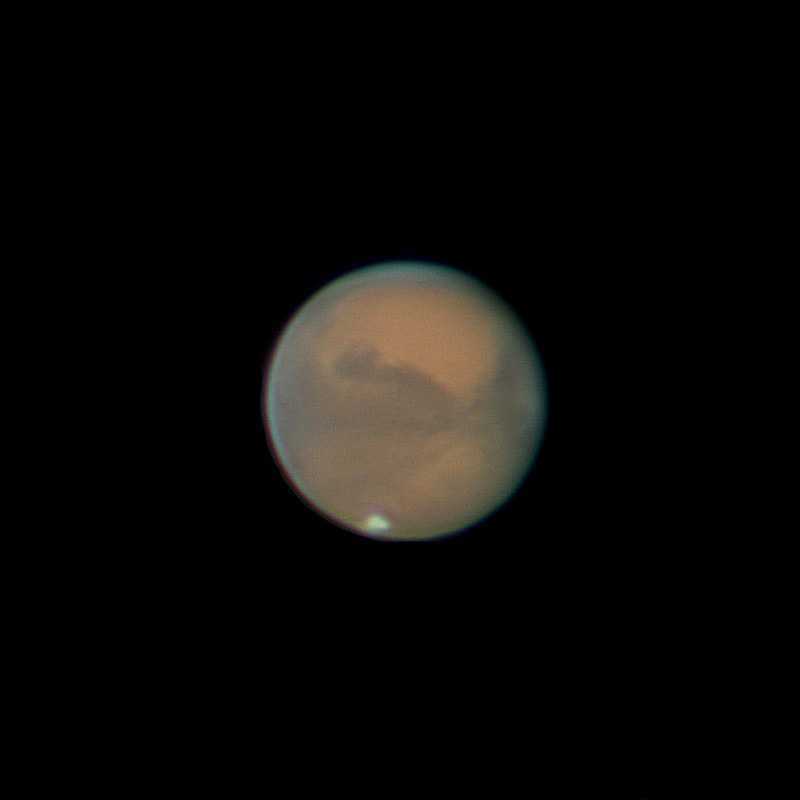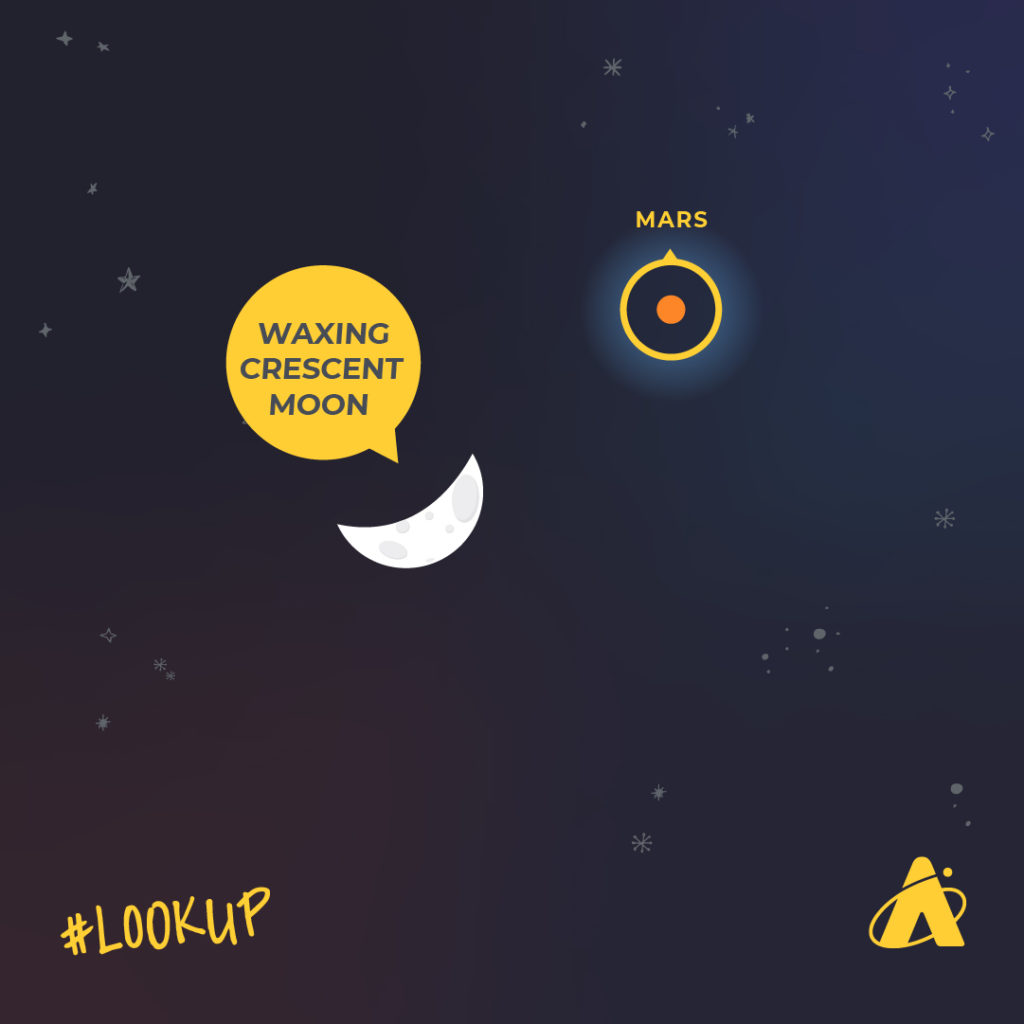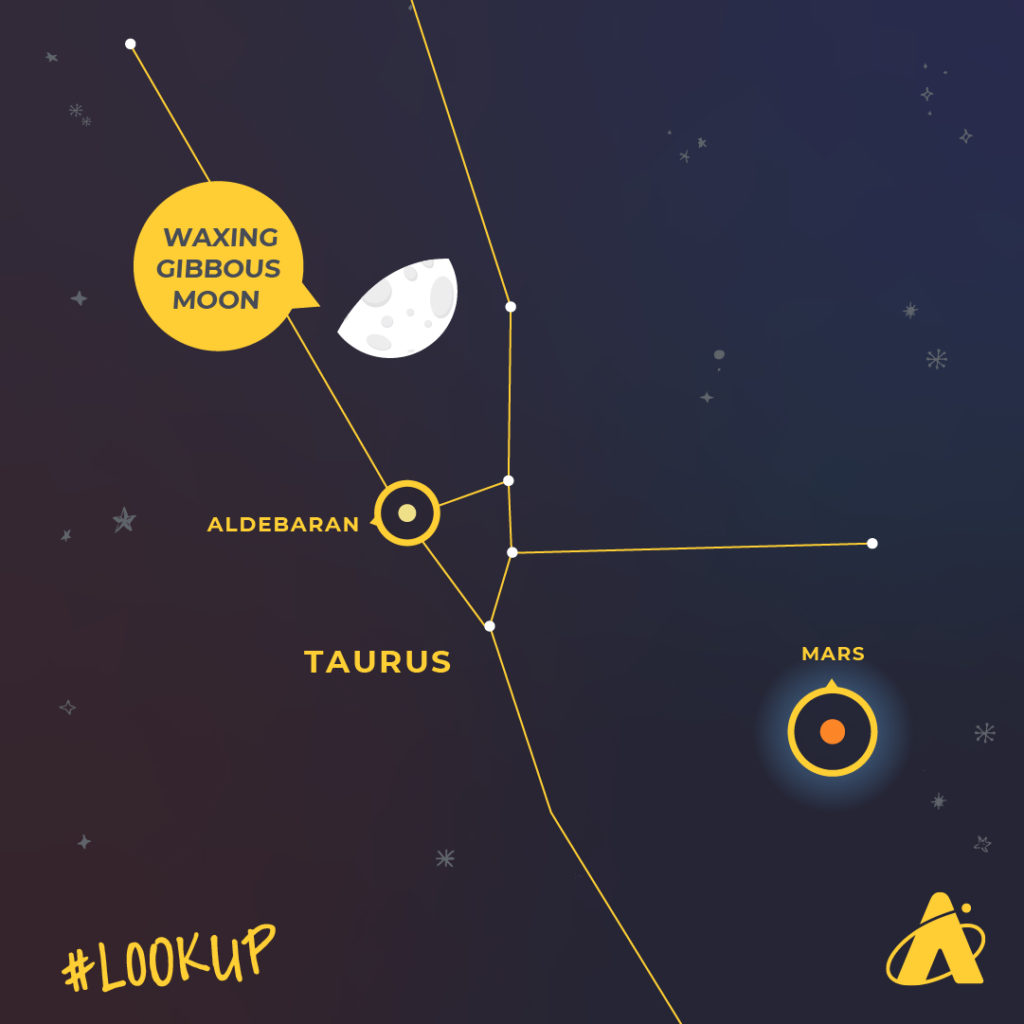Adler Skywatch: February 2021

Header Image: Mars can be seen here during its opposition in October 2020. Image Credit: Astrophotographer Nick Lake
Is that bright “star” in the sky really a star, or could it be a planet? There’s plenty of both to look for this month, February 2021!

Shortly after sunset, look high in the south-southwest skies to see the planet Mars. Its steady gleam distinguishes it as a planet, as opposed to the twinkling stars. The evening of the 18, it appears less than five degrees away from a waxing crescent Moon. By about 11:30 p.m. Chicago (Central) time, Mars appears very low in the west-southwest sky. The Mars Perseverance rover will land on the red planet at about 2:30pm CST on February 18, 2021. Join us all week long for Mars-di Gras leading up to the historic landing, including special online events like our Mars Rover Landing Watch Party presented by Bank of America and CNA.
Roughly 20 degrees east of Mars this month is the twinkling star Aldebaran, the “eye” of the constellation Taurus the Bull. Both are about the same brightness this month, and they share a similar ruddy color. As Mars moves westward across the evening sky, the bright night stars of wintertime follow not far behind. East of Aldebaran, there are Betelgeuse and Rigel, in the constellation Orion the Hunter, with its three-star belt. East of Betelgeuse is the star Procyon, in the tiny constellation Canis Minor. And below Procyon is the brightest star in the night sky, Sirius, in the constellation Canis Major. Fun fact: these stars make up the winter circle that dominates the night sky this time of the year.

Last month, those people with a clear sight-line to the southwest horizon briefly had the opportunity to see the bright planets Jupiter, Saturn, and Mercury very close to each other in the early evening. By the second half of January, however, Jupiter and Saturn were setting around the same time as the Sun, so they were virtually impossible to see. This month, sky-watchers get the opportunity to see these planets together again—but not until the last few days of the month, and not until just before sunrise. If you have a clear sight-line to the east-southeast horizon, see if you can spot them about a half-hour before dawn. Mercury and Saturn rise about the same time; Mercury is ever-so-slightly brighter and to the left of Saturn. A few degrees below and to the left of Mercury is Jupiter. The planets fade quickly as the rising Sun brightens the sky. If you miss them this month, you’ll have a better chance to see them in March.
Like last month, the planet Venus appears too close to the Sun to be readily visible.

Last Quarter Moon: February 4
New Moon: February 11
First Quarter Moon: February 19
Full Moon: February 27
Please note that these descriptions are for the Chicago area, using Central time.
Subscribe To Skywatch Weekly This February
Tour the night sky weekly with the Adler Planetarium’s Theaters Manager Nick, who uses cutting edge visualizations, NASA images, and astrophotography to show you what you can see weekly in the night sky.
Learn From Our Astronomy Educators
Watch exclusive live episodes of Sky Observers Hangout this February! First, our astronomy educators will teach you how to spot several Zodiac constellations in your night sky on February 8. Then, we’re giving you a behind-the-scenes tour of the Adler Planetarium’s Doane Observatory and our new 24-inch telescope on February 15. New episodes air every two weeks on Mondays.
Happy stargazing!






